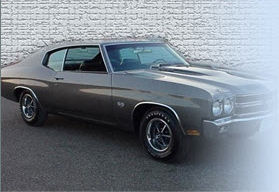|
SS396 PILOT Car Wiring
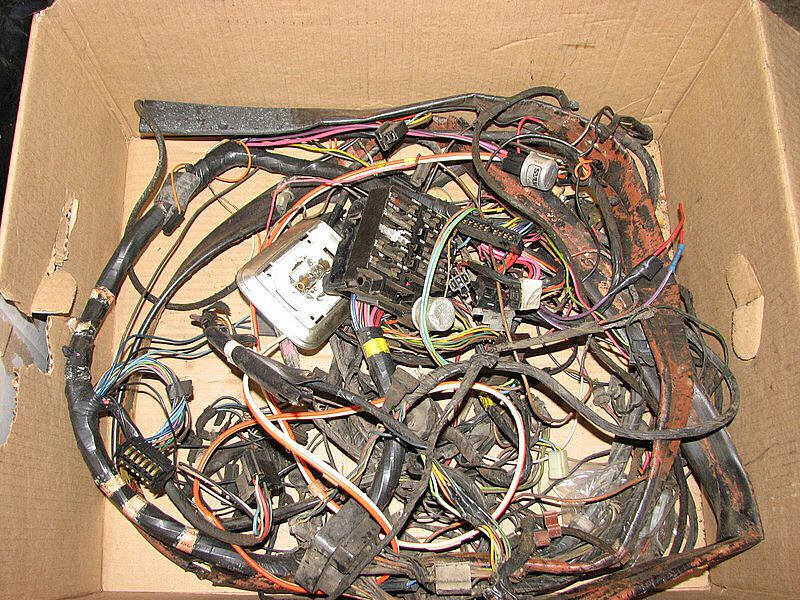
David Harter, owner of the only known to exist 1970 PILOT Chevelle
(differs from the LS6 Pilot cars) hired me to restore many of
the components off his car, many of which were one off units
which differed from the production units and were in some cases
experimental and hand made. His car bares serial number #42
and per some GM people he talked to is one the 42nd of 49 pilot
cars produced for testing and never meant to be released to
the public. It was the 138th 1970 Fischer body produced. Keep
in mind many of the other bodies were partial bodies and build
specifically for test fitting sheet metal and also for crash
testing as well as many other testing. For some odd reason this
car was sold to the public and found many years later by David
who did not even know it was a pilot car until he started the
restoration.
Much of the wiring in the car is unique and differs from the
factory production units as does the dash and gauges. More on
that later. The wiring was all marked with "PILOT" and "SPLICE"
decals which had to be painstakingly reproduced exactly like
the factory ones and put back exactly as found. The fuses were
also color coded by value which production cars also used. |
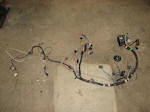
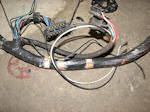
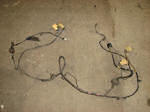
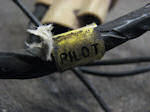
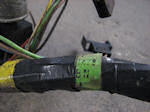
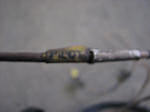
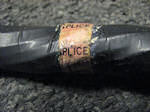
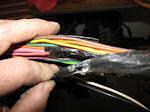
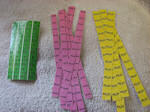
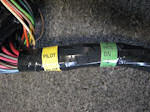
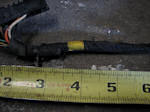
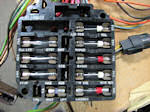
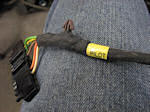
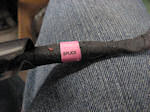
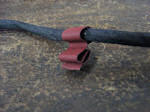
|
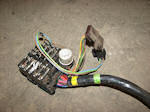

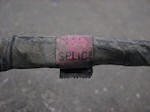
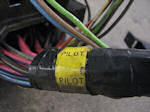

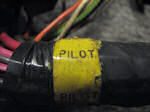
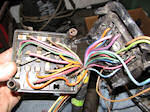
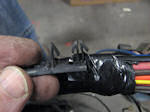
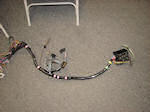
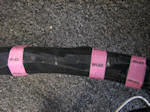

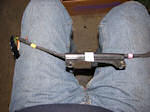
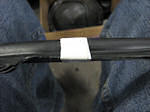

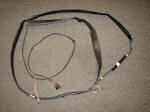
|
|
Drain Plugs
Here is a simple item such as the floor drain plugs. These were
galvanized from the factory and installed after primer and prior
to paint. Special caulking was also used and varies between
plants. As you can see, the restored drain plugs resemble originals
exactly. |
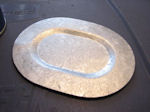
|
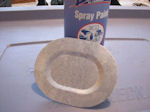
|
|
Air Conditioning
Here is a typical GM A-body A/C inner and outer box. Depending
on condition and parts availability I will also restore these
items. These can be tricky so only a select few are good enough
to restore. |

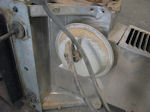
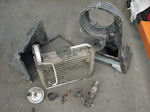
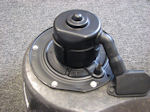

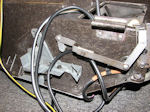
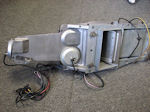 |
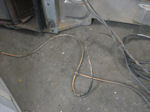

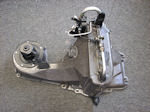

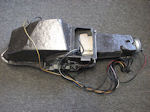
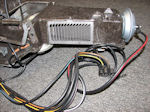 |
|
Heater Box
Here is a finished heater box showing the correct flat textured
finish, the grey phosphate component pieces and the inspection
mark that was found on the top. It is very common to find either
a grease pencil inspection mark or an inspection decal on heater
boxes. |

|
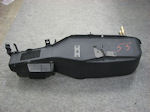
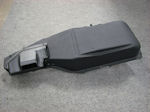
|
|
Kick Panel Vents
Here are the kick panel as well as the Astro Air vents common
on GM A-bodies. The foam seals are always deteriorated and need
to be replaced as well as individual parts needing replating
and new paint. Here is what normally takes place to restore
these vents. New rivets are installed and peened over exactly
like the factory did as well as the correct black oxide, black
zinc and dull silver zinc plating. Some plants sprayed these
while others dipped them in black lacquer. I restore them using
the exact process that GM did. |
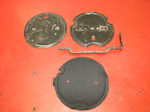
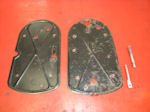
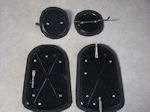
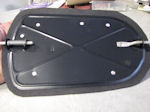
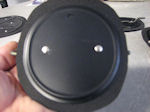 |
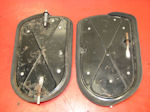
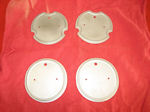
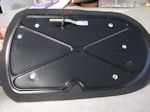
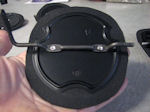 |
|
Steering Gear
Here is a power steering gear undergoing complete overhaul and
restoration. The housings are cleaned, glass beaded, hot tanked
and replated back to their original natural finish. All machined
surfaces are remachined to give them a fresh appearance. |
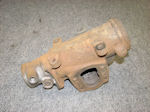
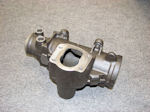
|
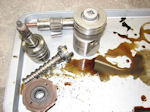

|
|
Steering Column
Here is a common steering column that was completely disassembled,
any bearings needed replacing, all components rebuilt and restored,
repainted and reassembled. |
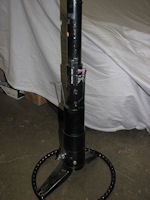

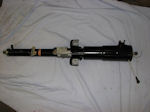
|
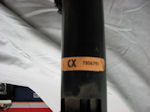
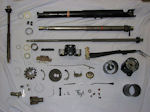
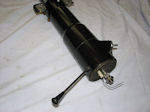 |
|
Wiper Motor
Here is a common GM wiper motor that is completed disassembled,
rebuild, relubricated, plated parts are replated and reassembled. |

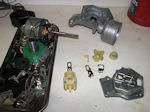
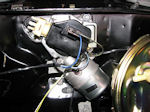
|
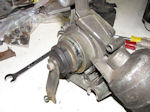
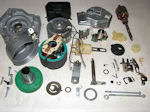
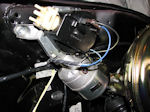 |
|
Shifter, Shocks, Brake Pedal, Emergency Brake
Miscellaneous components we restore & recondition. |
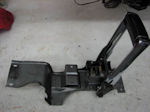
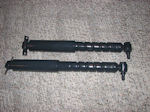
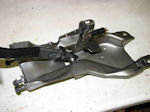
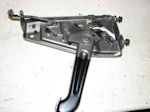 |
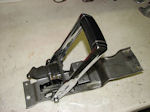
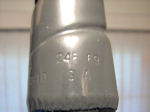

|
|
Brake Assemblies
Here are common rear brake assemblies completely restored using
correct colored springs, inspection marks and date codes. My
research has found that when and if the rear end housing was
painted that the drums were installed but no brake hardware
was installed, including brake lines. For this reason the inside
of the drum as well as the inside backing plates were natural.
If the rear housing was painted usually only a slight amount
of paint was on the drum face. |


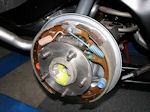
|
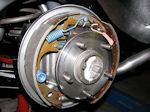
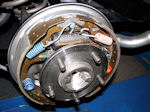

|
|
Muncie Shifter
Here is a complete Muncie shifter getting an overhaul. All components
are plated and painted according to how they were done originally
from the factory, handles are rechromed, lubrication and inspection
marks added and completely assembled. |
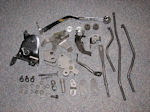
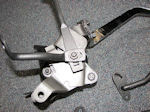
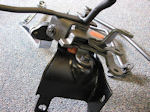
|
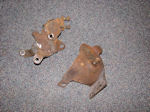
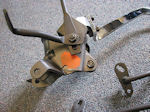
|
|
Hurst Shifter
We also restore some aftermarket parts as well as GM installed
aftermarket parts such as the factory used Hurst shifters. This
is time consuming and expensive due to the plating but you receive
back a brand new as GM delivered shifter. I use the same plating
that GM used on these parts and replicate every detail including
any inspection paint marks when found. This happens to be a
shifter for a 69 Camaro. |
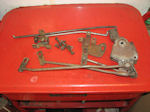
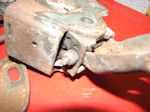
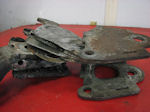
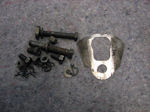

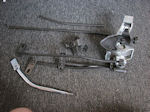 |
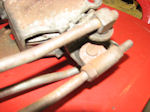
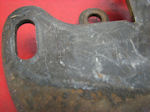
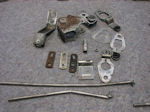
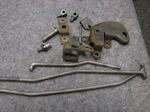
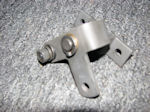
|
|
Suspension
Here are some typical front suspension restoration pieces that
I restore not only on cars we are restoring but also for customers
who ship us their parts. Everything is photo documented, disassembled
and inspection VERY thoroughly before they are stripped and
even then they are stripped very carefully to determine what
inspection marks were there. These are like snow flakes and
no two are alike nor have I seen any rhyme or reason to their
colors. After everything is stripped and cleaned then we plate
them with a proprietary chemical and process that took me over
20 years to perfect. There is NO paint applied to these pieces
other than to the center link and the inspection marks. When
completed they look exactly like new heat treated parts. |

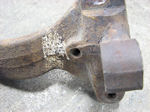
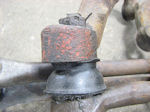
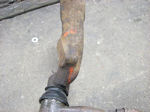
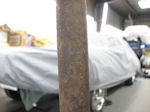

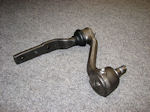 |
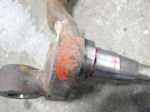
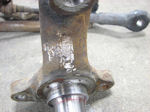
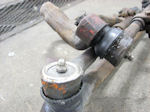
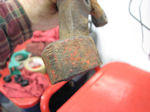
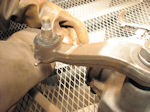
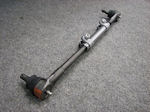
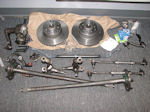
|
|
1970 Front Suspension Restoration
Here is yet another complete front suspension that was sent
to us by a customer to have us restore his front suspension
off a 1970 LS6. His suspension components still retained their
original inspection marks so everything was restored as found.
Also note the backing plates which were restored with a correct
"galvanizing" look and NOT zinc plating as is so commonly incorrectly
done. |



|



|
|
1968 Camaro Sub-Frame
Here is a complete front subframe for a 1968 big block Camaro
that was disassembled, stripped, documented and restored. This
took many hours of research and painstaking disassembly to not
destroy any original inspection marks, all of which were replicated
exactly as they were found. The subframe was also in very poor
condition and required many hours of work to restore.
Many times complete frames, subframes or just suspension components
are sent to us for restoration instead of the whole car. Many
people do a lot of their own work such as bodywork and paint
but prefer to have these items done by a professional. Consider
it on your next project.
|


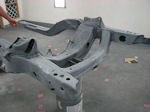
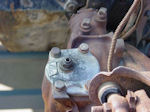

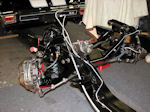


 |


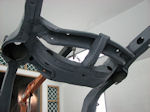
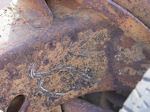





|
